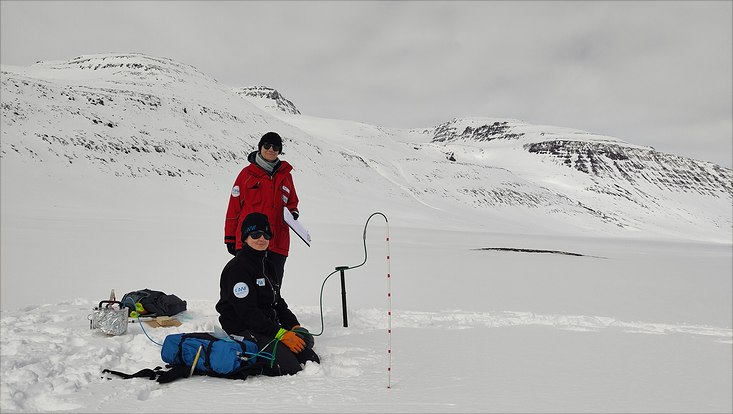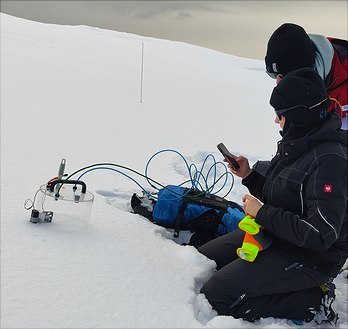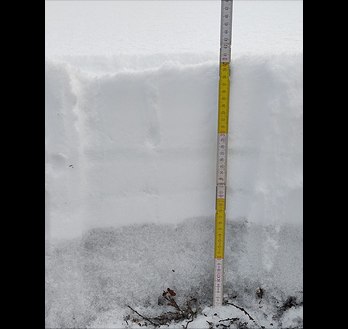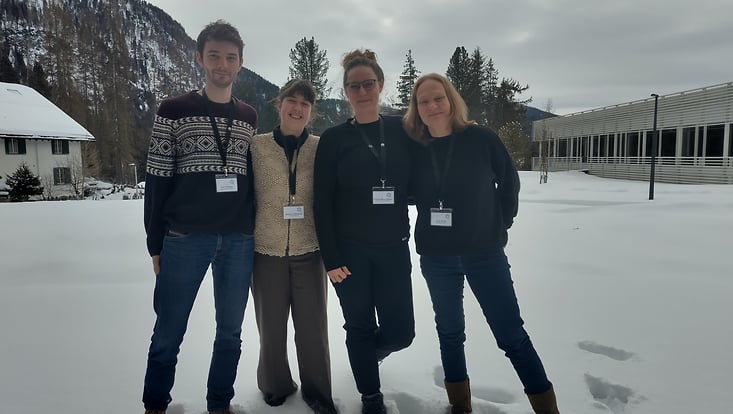Methane measurements on Disko Island in ice and snow
3 June 2024

Photo: UHH/O.Kaufmann
In May, this year's expeditions on Disko Island were already entering their second round. The second MOMENT team arrived and met the two CLICCS researchers Oliver Kaufmann and Evan Wilcox. Snow profiles were dug and described. The methane and carbon dioxide concentrations in the snow profile were measured. The team also checked whether methane is released from the snow surface.
In mid-May 2024, there was still around 40 cm of snow in some places in Blæsedalen, the "windy valley". This snow was by no means a homogeneous mass. CLICCS researchers Evan Wilcox and Oliver Kaufmann were digging profiles into the snow to describe the individual layers. The old snow was approx. 20 cm thick, on top of which lay an approx. 10 cm thick thawed and refrozen snow mass followed by approx. 10 cm of new snow. The boundaries are clearly visible even in the photo (see below). At the very bottom, directly above the ground, pressure differences between the convex and concave parts of the individual snowflakes caused them to metamorphize into a wide variety of differently shaped ice crystals.
Is there actually methane released, too, from the snow cover in winter?
Selina Undeutsch is investigating this question together with Birgit Grabellus, Evan Wilcox and Oliver Kaufmann. They put a chamber onto the snow surface and used a mobile gas analyser to measure whether the methane concentration in the chamber changed over time. The researchers also drove a pipe into the snow in 10-centimeter increments and measured the methane and carbon dioxide concentrations at the individual depths. Suddenly, there was a sudden increase in the carbon dioxide concentration from one depth increment to the next. "We have a layer of ice in the snow here, which formed when the thawed snow froze again at the end of April. It prevents the gas from rising further up through the snow cover," explained Kaufmann. The current methane flux measurements are essential in order to be able to estimate the annual balance of the methane fluxes as accurately as possible. They supplement the extensive measurements taken in spring and summer last year.





